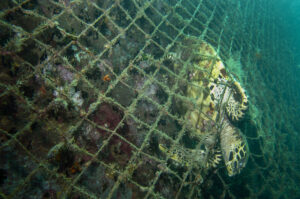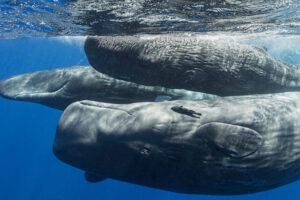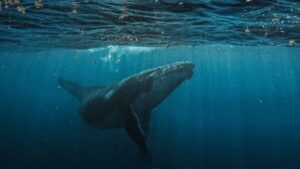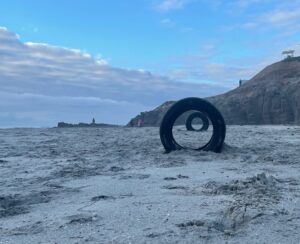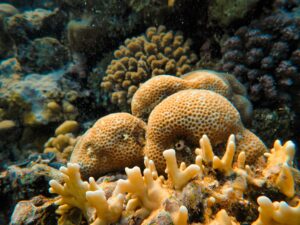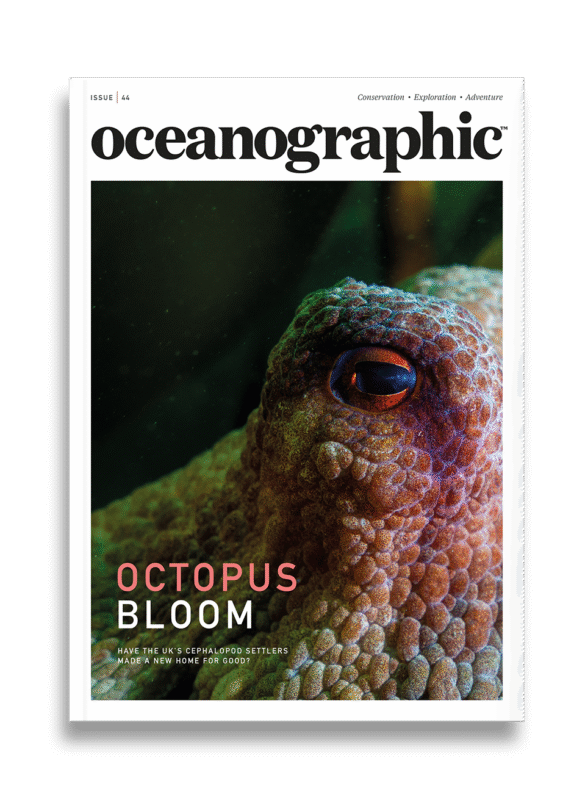Deep sea's 'Dark Oxygen' is "most profound discovery of our time"
A £2m project to extend research into 'Dark Oxygen' - oxygen produced in complete absence of photosynthesis on the deep seafloor - is to get underway with backing from The Nippon Foundation and IOC UNESCO under its UN Ocean Decade.
Deep-sea scientists have praised the discovery, in the last year, of a second source of oxygen – known colloquially as ‘Dark Oxygen’ for being produced in complete darkness on the deep ocean floor – for being “one of the most profound discoveries ever made” by the Scottish Association for Marine Science, and “transformational for our understanding of life on Earth and elsewhere”.
The discovery caught the attention of the scientific community around the world when it was first detailed in 2024, including those at NASA who believe ‘Dark Oxygen’ could be key to understanding how life could be sustained on other planets and in habitats previously assumed to be incompatible with hosting life.
What could potentially be a groundbreaking revelation for modern science, the emergence of ‘Dark Oxygen’ has since received the public backing of institutes around the world, including IOC UNESCO – which has now endorsed the project as a UN Ocean Decade activity – and the world’s largest philanthropic organisation, The Nippon Foundation, which is funding new and extended research into deep-sea ‘Dark Oxygen’ via a £2m funding package.
The project will be “the most detailed examination yet of our deep ocean, which could provide clues to how life on Earth began,” said Professor Nick Owens, director of the Scottish Association for Marine Science (SAMS). “I have said on a number of occasions and I truly believe that this is one of the most profound discoveries ever made by SAMS.”
Kicking off a multi-year research project, the team – led by Professor Andrew Sweetman, leader of the seafloor ecology and biogeochemistry research group at SAMS – will send purpose-built sensors to the deepest part of the ocean to further probe the discovery they made last summer of ‘Dark Oxygen’.
Made possible by the £2m funding from The Nippon Foundation, the team anticipate that the first sensor will most likely be ready to go within three years from now, making this a crucial timeframe with the Ocean Action Decade. Findings from the research could prove critical to the adoption of ocean protection measures made by nations around the globe now staring down the 2030 deadline.
‘Dark Oxygen’ can be produced in complete darkness on the deep ocean floor, where light cannot penetrate. Its discovery challenges the previously held scientific consensus that oxygen is produced solely from light through photosynthesis. The discovery of this second source of oxygen has therefore called into question how life began on Earth.
It was also the discovery that never happened, with the correlating data largely ignored by Professor Sweetman and the team behind it for the best part of a decade, perceived at the time as an anomaly. However, upon returning to the data some nine years later, the SAMS scientist was finally convinced the data was pointing towards this groundbreaking truth.
“Our discovery of ‘Dark Oxygen’ was a paradigm shift in our understanding of the deep sea and potentially life on Earth, but it threw up more questions than answers,” said Professor Sweetman.
“This new research will enable us to probe some of these scientific questions. If we show that oxygen production is possible in the absence of photosynthesis, it changes the way we look at the possibility of life on other planets, too. Indeed, we are already in conversation with experts at NASA who believe ‘Dark Oxygen’ could reshape our understanding of how life might be sustained on other planets without direct sunlight.”

The discovery of ‘Dark Oxygen’ was made in a region of the deep-sea known as the Clarion-Clipperton Zone, a huge flat area of the seafloor that stretches between Hawaii and Mexico. It’s an area where mining companies, like the Metals Company, already have plans to start harvesting the same nodules discovered to be producing this ‘Dark Oxygen’ for their rare metals. The research team at SAMS is also seeking to understand if ‘Dark Oxygen’ production takes place in other deep-sea areas, and will take various measurements and readings to help identify the source. These investigations will begin later this year.
It’s uncertain for now just what role these oxygen-producing rocks play within the deep seabed environment and what impact harvesting them – via deep sea mining – would have on the ecosystem. Given the fragility of the deep sea ecosystem as it stands, however, campaigners have been vocal in putting an end to deep sea mining before it gets started.
Mining companies, however, are planning to log their first applications for licences to begin harvesting this year. It makes the next few years of research crucial for the conservation and protection of the deep seabed.
The three-year research programme will investigate whether hydrogen is released during the creation of Dark Oxygen and whether it is used as an energy source for an unusually large community of microbes in parts of the deep ocean, as well as how climate change might impact biological activity in the deep sea.
“This is why research now is crucial,” said Professor Sweetman. “If the process [of ‘Dark Oxygen’] is happening naturally, and we extract these nodules, that might have some sort of effect on the deep seabed. The prudent thing to do is go out and explore; try to understand what is going on here, before we move forward with exploitation.
“We know deep sea mining will have an effect on biodiversity and the ecosystem in general. There are going to be effects in the water columns and at the seafloor. What we have shown is that there may be another effect which we haven’t thought about.
All we’re asking for is a little more time to go out and find out what’s going on… We’ll try and get the answers as fast as possible, but I think the right decision is to hold off just a little bit longer before we decide if this is work we need to do as a global society.”
The project will also allow researchers to study the deep seafloor into the Hadal Zone, an area which reaches 6,000 to 11,000 metres depth and makes up around 45% of the entire ocean. Thanks to the support package from The Nippon Foundation, the team will develop purpose-built and autonomous landers carrying specialist instrumentation to those depths. These will be the first UK-based assets with the capability of sampling below 6,000 metres.
Yohei Sasakawa, Chairman of The Nippon Foundation, said: “The sea is vital to sustaining human life and biodiversity, but even today so much of the deep sea is unknown. We are passionate about innovating to achieve a better society, and we are proud to support Professor Sweetman’s research into ‘Dark Oxygen’ in the hope that we might learn more about the deep sea and the life which exists at the bottom of the ocean.”
IOC UNESCO has already endorsed the project as a UN Ocean Decade activity, while Professor Nick Owens, director of SAMS, has celebrated how fitting the project is to be undertaken this year, the 150th anniversary of the discovery of the deep ocean.
“As an institution, we trace our roots back to the UK’s Challenger Expedition of 1872-76,” he said. “It is fitting that 150 years after that expedition gave us our first insights into the deep ocean, we are now uncovering some of its best-kept secrets.”
Watch the SAMS explainer video on how Dark Oxygen is formed below:


"*" indicates required fields
Printed editions
Current issue
Back issues
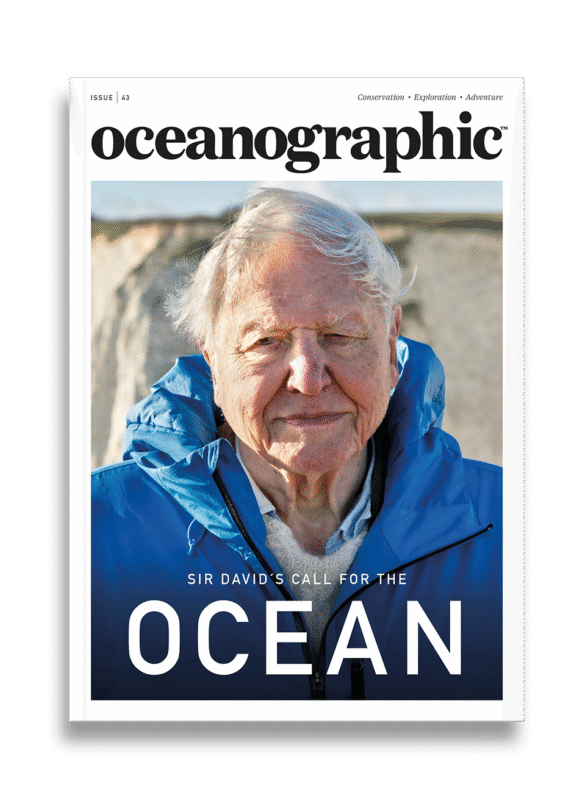
Back Issues
Issue 43 Sir David Attenborough’s ‘Ocean’

Back Issues
Issue 41 Holdfast to the canopy
Enjoy so much more from Oceanographic Magazine by becoming a subscriber.
A range of subscription options are available.

